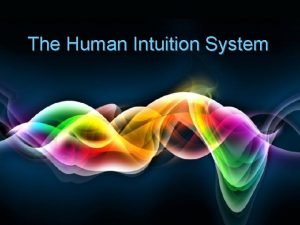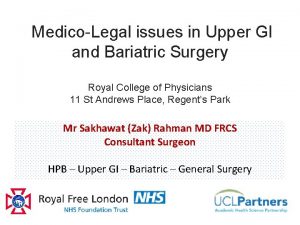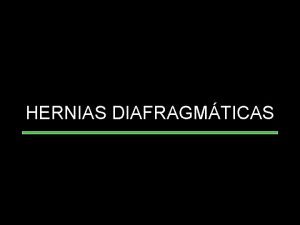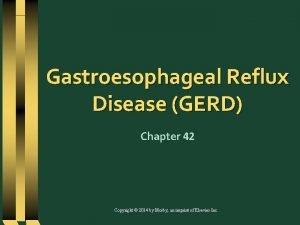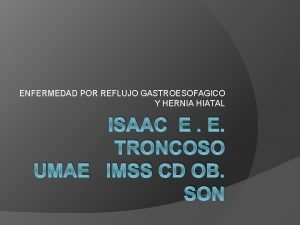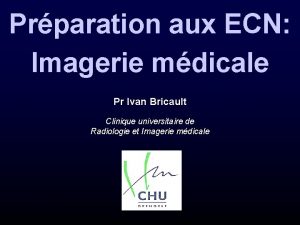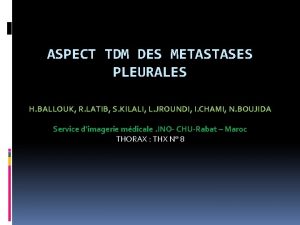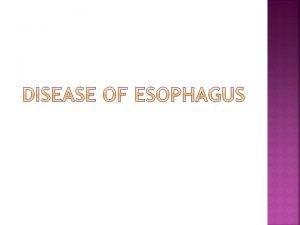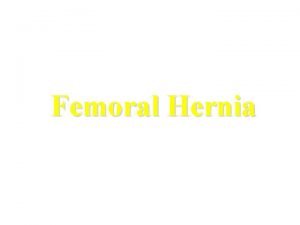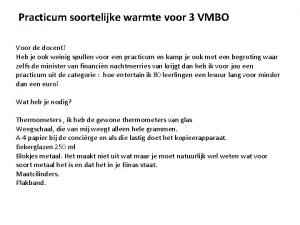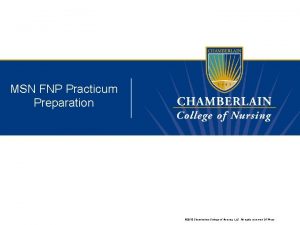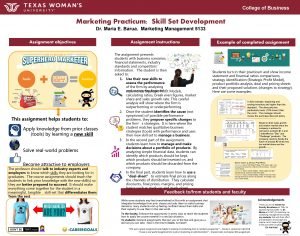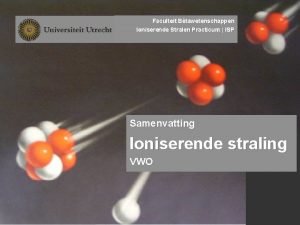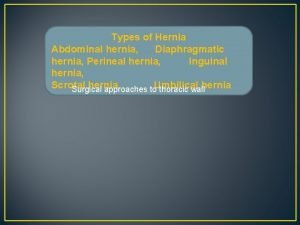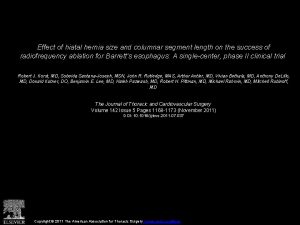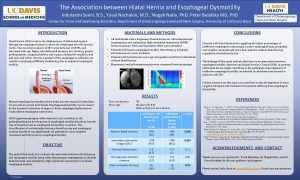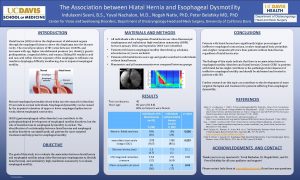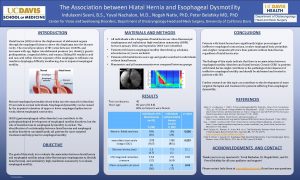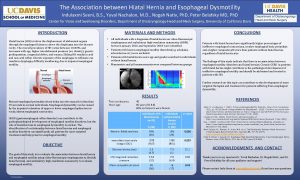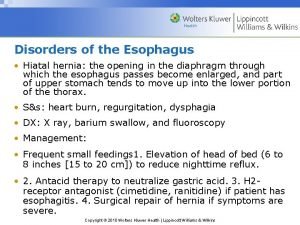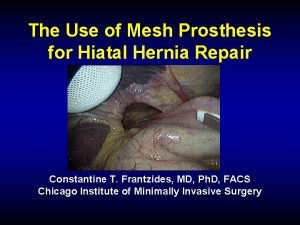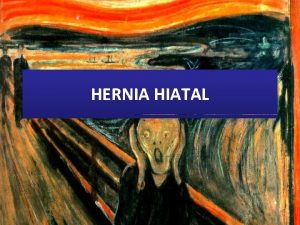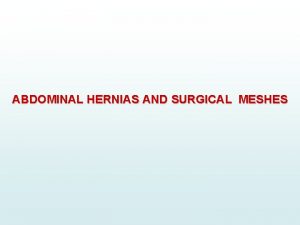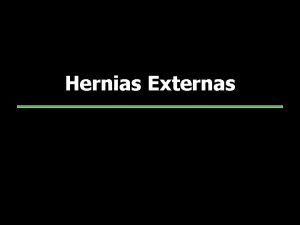Hiatal Hernia and Hiatal Hernia Syndrome Practicum Steven



















- Slides: 19

Hiatal Hernia and Hiatal Hernia Syndrome Practicum Steven Sandberg-Lewis, ND, DHANP ILANP 2016

What we can fix?

Incidence in the U. S. • Sliding hiatal hernia affects over 40% of the U. S. population (Merck Manual 2006) • 15% of the U. S. population (http: //medicine. yale. edu) • The frequency of hiatus hernia increases with age, from 10% in patients younger than 40 years to 70% in patients older than 70 years. (http: //emedicine. medscape. com/article/178393 overview#aw 2 aab 6 b 2 b 3 aa)

More common in the Western world • Low fiber diet and the resulting chronic constipation and straining during bowel movements, may explain the higher incidence of this condition (Burkitt et al, 1973)

considered asymptomatic by most physicians unless it causes reflux • “In most patients, hiatus hernias cause no symptoms. This is especially true of sliding hernias. When symptoms occur, they may only be heartburn and regurgitation, when stomach acid refluxes back into the esophagus. Some patients with fixed hiatus hernias experience chronic reflux of acid into the esophagus, which may cause injury and bleeding. Anemia, or low red blood cell count, can result. Further, chronic inflammation of the lower esophagus may produce scarring and narrowing in this area. This, in turn, makes swallowing difficult, and food does not pass easily into the stomach. ” From http: //www. ecaware. org/what-is-esophageal-cancer/riskfactors/hiatus-hernia/

Hiatal hernia syndrome • Syndrome vs. hiatal hernia • Clinical picture (revised from R. Failor) • fatigue mental dullness • easy satiety shallow breathing • pallor Anxiety • chest oppression reflux • non-cardiac chest pain dysphagia, globus • stitching pains full feeling at the base of the throat • averse to constriction regurgitation • “spare tire” bulge tickling non-productive cough • *fullness in the ears right shoulder pain • excessive belching flatulence

Hiatal hernia syndrome • Reflex points • • Left of xyphoid (HHS point) 4 th ICS mid clavicular 4 th ICS mid axillary T 10 -11 left paravertebral area

Hiatal hernia point xyphoid Vector of traction

Hiatal hernia point

Muscle test for HHS

Hiatal hernia syndrome • Treatment: • Visceral manipulation • Hiatal hernia visceral technique • 1) Hold traction of the soft tissue at the CSA • Vector is toward the left ASIS • This may take 3 -5 minutes • Feel for counter- clockwise followed by clockwise rotation of the tissues. Follow the movement. • “Balloon” the stomach – 3 clockwise rotations • Free the ribs and diaphragm if needed

Visceral technique Step 1 – traction toward left ASIS

Visceral technique Step 2 -continue traction & follow the rotation 13

Visceral technique Step 3 - continue traction & follow the rotation 14

Visceral technique Step 4 – “ballooning” – perform 3 clockwise rotations 3 times 15

Treatment continued • • Dietary basics Functional breathing and lifting Treat hypochlorhydria if present NMT or myofascial release as needed with a special focus at • the occiput (usually the left side) • T 10 -11 (usually the left side)


Hiatal hernia syndrome • Energetic medicine/psychology if there is an unresolved mental/emotional factor • post manipulation exercises • Heel drops • Patient drinks (not sipping) 12 -16 ounces of warm water on arising and then bounces on the heels eleven times. Performed daily for one weeks, every other day for a week and then once weekly. . • Leg raise • Lying supine on a flat surface with legs adducted, the patient raises both legs 12 -18 inches, slowly abducts and adducts the legs and then lowers to resting. Gradually increase the number of repetitions over time.

Hiatal hernia syndrome • Post manipulation exercises, cont. • Knee raise • Sitting in a chair, the patient supports the upper body by holding the arms or seat of the chair. Keeping he knees abducted, the patient inhales, then exhales as they flex the legs on the trunk (as far as possible). Taking the next breath as they extend the legs and rest the feet on the floor, they exhale as they repeat the procedure. Gradually increase repetitions over time. • Recommended reading: • Three Generations of Healing Secrets, R. M. Failor, D. C, N. D. , selfpublished, 1975. • The New Era Chiropractor, R. M. Failor, D. C, N. D. , self-published, 1979. • Hiatal Hernia Syndrome: Insidious Link to Major Illness Guide to Healing, T. A. Baroody, DC, Eclectic Press, 1990
 Can hiatal hernia cause heart palpitations?
Can hiatal hernia cause heart palpitations? Hiatal hernia vagus nerve
Hiatal hernia vagus nerve Clasificacion de hernia hiatal
Clasificacion de hernia hiatal Why “avoid chocolate” after nissen fundoplication
Why “avoid chocolate” after nissen fundoplication Gran hernia hiatal
Gran hernia hiatal Radio de bassin normale
Radio de bassin normale Coiffe apicale bilatérale
Coiffe apicale bilatérale Hiatal hernia nausea
Hiatal hernia nausea Kode icd 10 obesitas akibat pil kb
Kode icd 10 obesitas akibat pil kb Hiatus defenition
Hiatus defenition Diff between inguinal and femoral hernia
Diff between inguinal and femoral hernia Ethical and legal issues involved in practicum
Ethical and legal issues involved in practicum Medirek
Medirek Pas u of t
Pas u of t Soortelijke warmte water
Soortelijke warmte water Chamberlain dnp curriculum
Chamberlain dnp curriculum Cel practicum
Cel practicum Marketing practicum
Marketing practicum Hefa 2
Hefa 2 K-vangst vervalvergelijking
K-vangst vervalvergelijking
